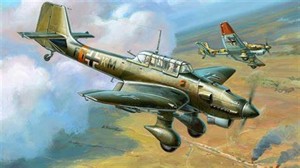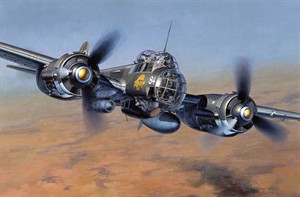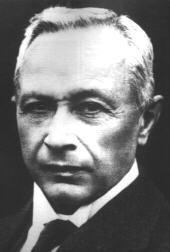

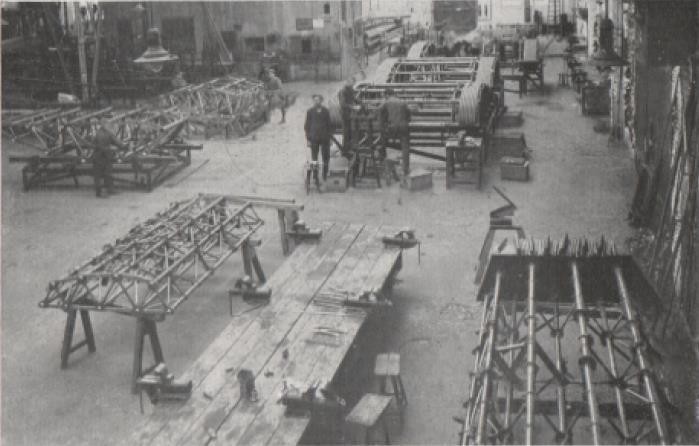
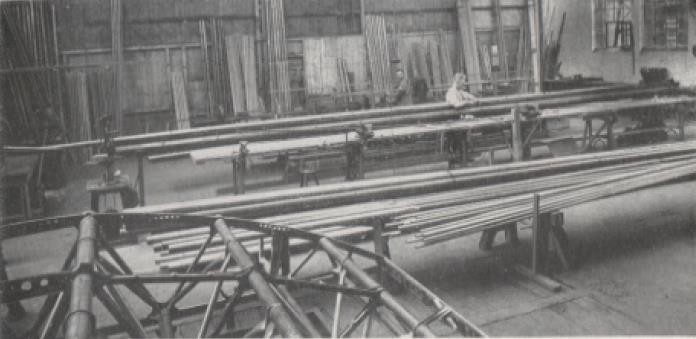
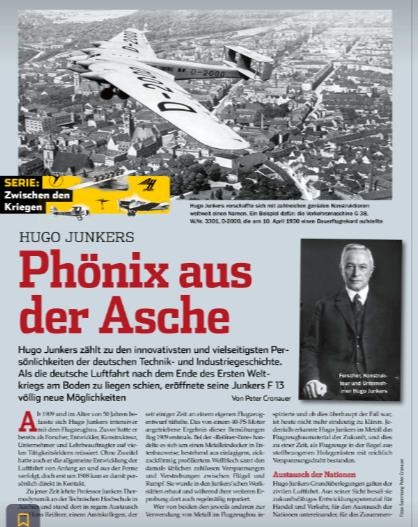
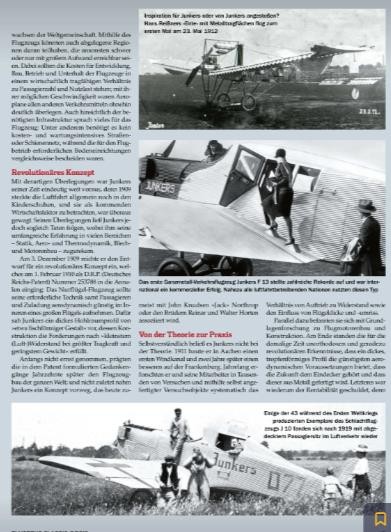
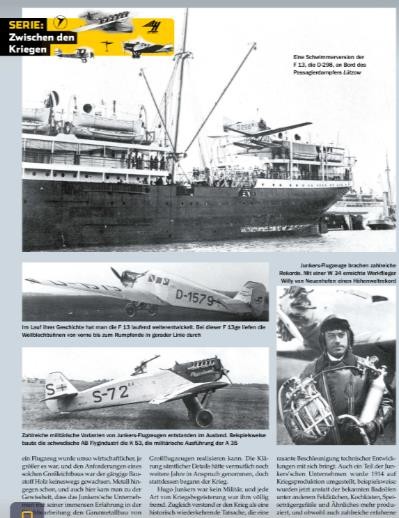
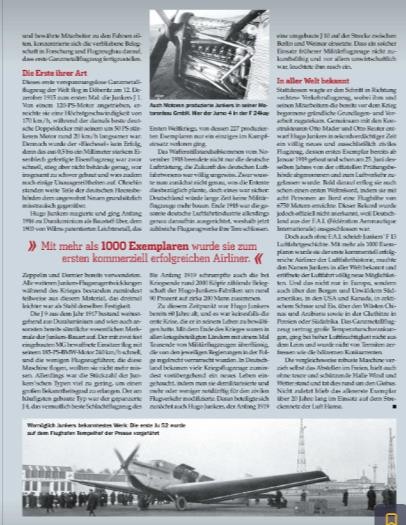
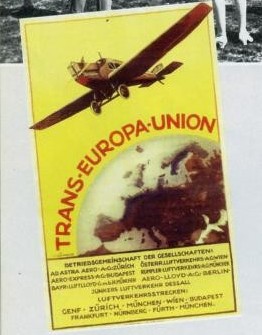
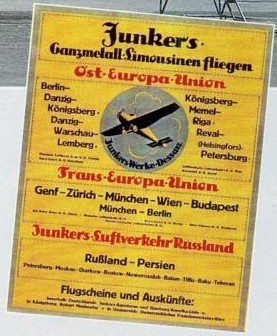

Junkers Flugzeug- und Motorenwerke AG (JFM, earlier JCO or JKO in World War I, English: Junkers Aircraft and Motor Works) more commonly Junkers [ˈjʊŋkɐs], was a major German aircraft and aircraft engine manufacturer. It was founded in Dessau, Germany, in 1895 by Hugo Junkers, initially manufacturing boilers and radiators. During World War I and following the war, the company became famous for its pioneering all-metal aircraft. During World War II the company produced the German air force's planes, as well as piston and jet aircraft engines, albeit in the absence of its founder who had been removed by the Nazis in 1934.
Early inter-war period
In the immediate post-war era, Junkers used their J8 layout as the basis for the F-13, first flown on 25 June 1919 and certified airworthy in July of the same year. This four passenger monoplane was the world's first all-metal airliner. Of note, in addition to significant European sales, some twenty-five of these airplanes were delivered to North American customers under the Junkers-Larsen affiliate and were used primarily as airmail planes.
The Treaty of Versailles, signed only days after the F-13 flew, initially forbade any aircraft construction in Germany for several months. After that span of time, only the design of civilian aircraft was permitted to Germany. With a partial relocation of the Junkers firm to the Fili western suburb of Moscow, the Junkers firm was able to restart its aircraft manufacturing concern within the borders of the Soviet Union in 1922,[1] the partly revitalized Junkers firm developed a series of progressively larger civil aircraft including the single-engined G.24 and three-engine G.31. Neither aircraft was a commercial success. With the expiration of treaty restrictions in 1926, Junkers introduced the Junkers W33 and Junkers W34 series, which did find significant commercial success via large production orders in passenger, freight hauling, and, somewhat later, military configurations. The W-33/W-34 series also set multiple aviation "firsts" including records for flight duration, flight distance, altitude, rocket-assisted take-off and inflight refueling between 1926 and 1930.
After previous study work, Junkers set up the Junkers Luftbild-Zentrale in Dessau in 1924 to produce aerial photographs for various purposes.[2] Eight years later, due to the financial difficulties of the parent company, this branch was separated and continued to operate as Bild-Flug for a year until it was taken over by its main competitor, Hansa Luftbild.
Junkers' produced a design study in 1924 for a visit to the United States. The study outlined a four-engined 80-passenger plane, incorporating a forward canard wing, as well as a main wing, both of which were fitted above twin pylons. Called the Junkers J.1000 Super Duck passenger seating was to be provided both in the main wing and the hull sections of the craft. This Junkers design, including a scale model, was intended to illustrate an aircraft capable of trans-Atlantic operations of 8 to 10 hours and was completely revolutionary for its day.
The basic principles outlined in this design were later introduced in the Junkers G.38, which was introduced and put into regular service by Deutsche Luft Hansa. At the time of its introduction, this four-engined transport was the largest landplane in the world carrying thirty-four passengers and seven crew members. The G.38 sat some of its passengers in the wing area outboard of the fuselage, the front of which was covered with windows.
Also, in 1932, Junkers joint project with Maybach designed and built an aerodynamic car but found due to the depression that the market for high end luxury cars was saturated.
Around 1931 the company suffered from a series of financial difficulties that led to the collapse of the group of companies. The existing shareholders pressured Hugo to leave the company. Hugo, however, was the patent holder on a wide variety of the technologies used in most of the existing Junkers designs, including many of their engines.
A plan was started to solve both problems by "buying out" Hugo's engine patent portfolio and placing it into the hands of a new company, the Junkers Motoren-Patentstelle GmbH, which was eventually formed in November 1932. The new company would then license the technologies back to the various companies, most notably what was then Junkers Motorenbau However, before Junkers actually transferred his patents to the Patentstelle, the collapse of the Junkers consortium was solved by the sale of Junkers Thermo Technik GmbH to Robert Bosch GmbH, whose company still uses the brand name. Adolf Dethmann, a Communist activist and friend of Hugo, was appointed managing director.
